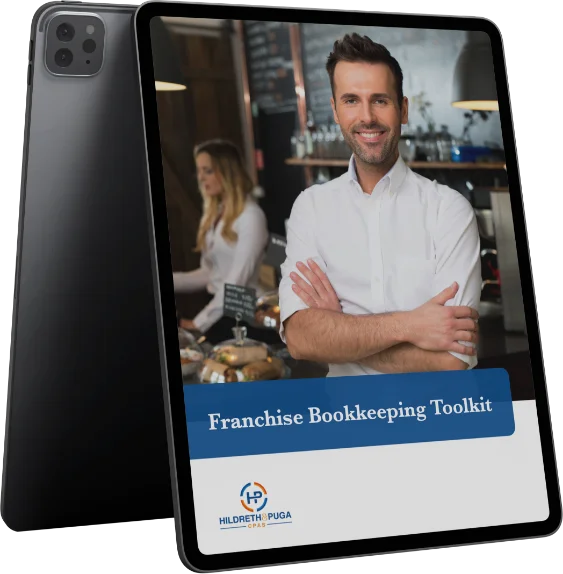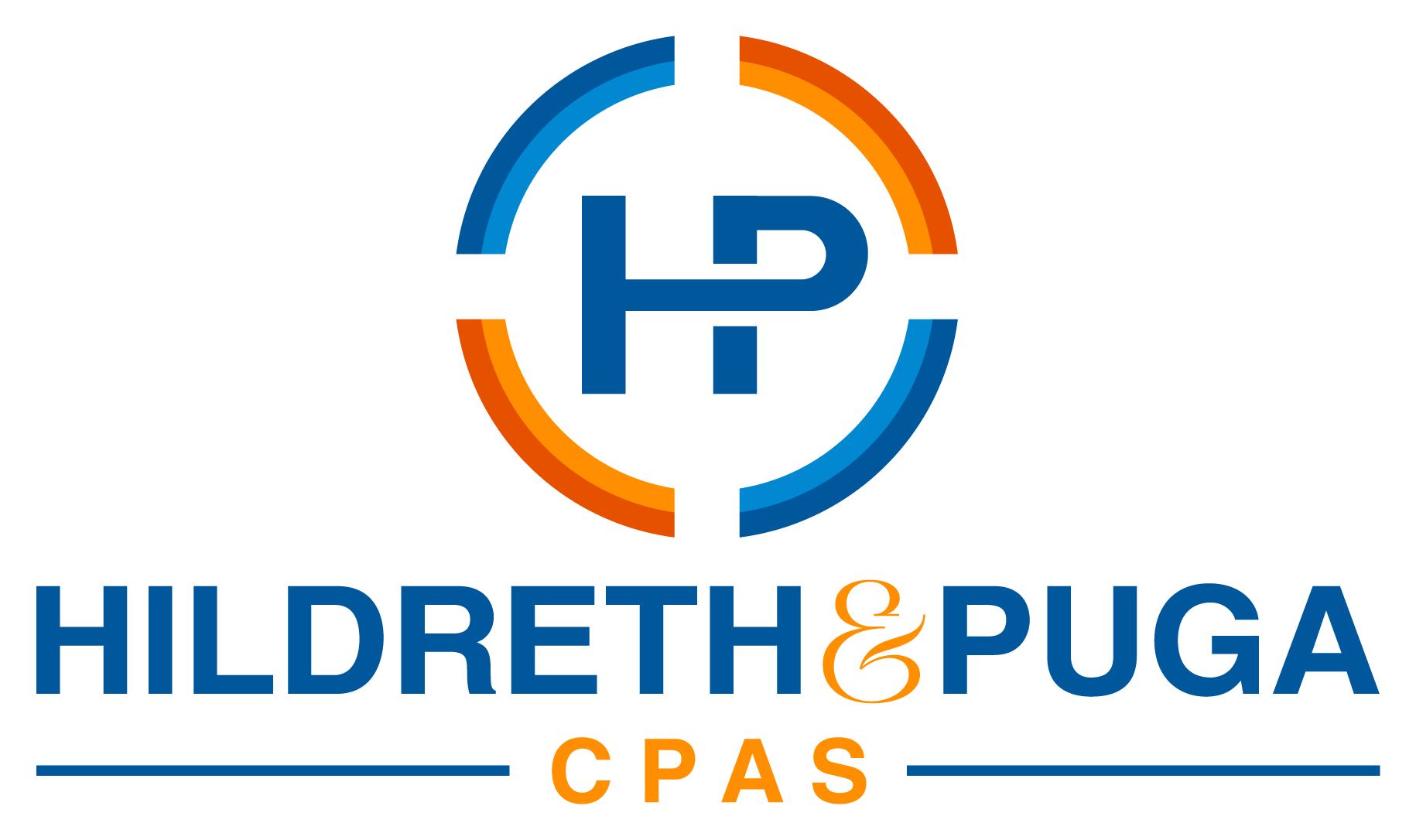Running a restaurant business means balancing numerous factors to ensure profitability and sustainability. One of the most critical financial metrics every restaurant owner must understand is the break-even point. Knowing your break-even point helps you determine when your restaurant will finally start generating profit after covering all expenses.
At Hildreth & Puga CPAs, we specialize in providing expert accounting for restaurant business needs, dedicated to helping restaurant owners navigate the complexities of the accounting in restaurant industry. This blog will unpack how you can calculate and interpret your break-even point and why accurate accounting for a restaurant business is essential to your success. For more about our approach and team, visit our About Us page.

What Is the Break-Even Point in Restaurant Accounting?
Your restaurant’s break-even point is the level of sales at which total revenues equal total expenses—meaning your net income is zero. At this point, all fixed and variable costs are covered. Once you surpass the break-even point, your restaurant begins to make a profit.
Understanding this metric enables you to make data-driven decisions on menu pricing, cost control, staffing, and expansion.
Fixed Costs vs. Variable Costs in Restaurant Accounting
To calculate your break-even point, you must distinguish between fixed and variable costs:
- Fixed Costs: These are expenses that remain constant regardless of sales volume. Examples include rent, insurance, property taxes, and salaried staff wages.
- Variable Costs: These fluctuate directly with sales volume, such as food and beverage costs, hourly labor wages, and utilities linked to production.
Accurate tracking and categorization of these costs through effective accounting for restaurant business is vital. Our Bookkeeping & Payroll Services aid in maintaining clear and organized accounts.
Contribution Margin and Its Role in Break-Even Analysis
Contribution margin represents how much money from each sale contributes toward covering fixed costs and profit generation after covering variable costs.
Formula:
Contribution Margin = Revenue per Unit – Variable Cost per Unit
A higher contribution margin means you can reach your break-even point faster.
How to Calculate Your Break-Even Point
Several formulas exist to calculate the break-even point, depending on your preferred measurement—units sold or sales dollars.
Break-Even Point in Units
This formula calculates the number of individual sales (e.g., meals served) needed to break even:
Break-Even Point (Units) = Total Fixed Costs ÷ (Revenue per Unit – Variable Cost per Unit)
For restaurants, the “unit” typically refers to one customer purchase or meal.
Break-Even Point in Sales Dollars
This measures how much total dollar sales you need to reach break-even:
Break-Even Point (Sales $) = Total Fixed Costs ÷ Contribution Margin Ratio
Where Contribution Margin Ratio = Contribution Margin per Unit ÷ Revenue per Unit
Using these calculations requires accurate financial reports, which is where expert accounting for restaurant business plays a key role. Our restaurant accountants ensure your data is clean, precise, and actionable.
Why Knowing Your Break-Even Point Matters
Tracking your break-even point provides actionable insights that influence strategic decisions:
- Pricing Strategy: Understanding costs helps set prices that cover expenses while attracting customers.
- Cost Control: Pinpointing fixed and variable costs allows better management to improve margins.
- Financial Forecasting: Knowing when profitability begins guides budgeting and investment.
- Risk Management: Assists in evaluating the viability of new menu items or locations.
Case for Professional Accounting in the Restaurant Industry
Many restaurants struggle without clear accounting in restaurant industry fundamentals. Our accounting for restaurant services help bridge this gap by providing:
- Detailed financial analysis
- Accurate break-even calculations
- Ongoing advisory support
You can explore more about our tax strategies tailored for the food service industry in our Tax Preparation & Planning services.
The Role of Technology Integration in Accounting for Restaurant Business
In today’s restaurant industry, technology integration is revolutionizing how accounting for restaurant business operations are managed. Modern accounting software, when seamlessly connected with Point of Sale (POS) systems, payroll platforms, inventory management, and vendor tracking tools, enables restaurant accountants to deliver real-time financial insights critical for effective decision-making.
Benefits of Integrated Restaurant Accounting Solutions
Integrating your accounting system with restaurant operational technology offers multiple advantages:
- Real-Time Financial Updates: POS transactions automatically sync with your accounting software, providing accurate, up-to-the-minute data on sales, expenses, and cash flow. This reduces manual entry errors and keeps your financial reports current.
- Streamlined Operations: Integration eliminates duplicate data entry by syncing sales, vendor invoices, employee hours, and inventory usage. This burnout reduction means your team can focus on restaurant operations rather than chasing paperwork.
- Comprehensive Reporting: Integrated data enables detailed and customizable reporting combining financial and operational metrics, such as food cost ratios, labor efficiency, and sales trends. This holistic view improves your ability to manage costs and profit margins effectively.
- Improved Compliance and Audit Readiness: Real-time, accurate records foster smooth tax compliance and simplify audits, reducing risk and stress.
How Hildreth & Puga CPAs Leverage Technology
At Hildreth & Puga CPAs, our restaurant accountants utilize advanced cloud-based platforms integrated with your POS and management systems. This setup allows us to:
- Perform prompt and precise reconciliations.
- Quickly identify cost-saving and efficiency opportunities.
- Provide interactive dashboards and alerts for essential financial metrics.
Coupled with our comprehensive Bookkeeping & Payroll Services and Tax Preparation & Planning, our technology-enhanced approach ensures your accounting remains accurate and insightful.
Empowering Growth Through Technology
Adopting integrated accounting systems is a strategic move for any restaurant seeking sustainable growth and operational excellence. We assist in selecting ideal platforms tailored to your restaurant’s complexity, making the transition seamless.
Our Free Bookkeeping Diagnostic Review for Multi-Unit Franchise Operators provides a thorough evaluation of your current financial processes and alignment with technology solutions to meet your unique needs.
Get Your Free Franchise Bookkeeping Toolkit
Take control of your franchise finances with our free toolkit. Inside, you’ll find a monthly close checklist, a list of tasks to delegate, and practical tips for managing multiple locations more efficiently.

By embracing technology integration in accounting for restaurant business, you position your restaurant to operate with enhanced efficiency, accuracy, and agility in today’s competitive landscape.
FAQs
What is the importance of knowing my restaurant’s break-even point?
It helps you know how much you need to earn to cover costs, guiding pricing and operational strategies—critical for profitability.
How do fixed and variable costs impact restaurant accounting?
Fixed costs stay constant regardless of sales, while variable costs fluctuate. Proper accounting distinguishes these to inform financial decisions.
Can Hildreth & Puga CPAs help me with break-even calculations?
Absolutely. Our restaurant accountants provide precise financial analysis and reporting to determine your break-even point accurately.
What accounting services for restaurants do you offer?
We provide comprehensive services including bookkeeping, payroll, tax planning, and business advisory, all tailored to restaurant needs.
Can Hildreth & Puga CPAs help me with break-even calculations?
Absolutely. Our restaurant accountants provide precise financial analysis and reporting to determine your break-even point accurately. For more insights on managing your restaurant’s finances and seasonal fluctuations, please see our blog on Restaurant Bookkeeping Services: Navigating Seasonality In Your Business.
What accounting services for restaurants do you offer?
We provide comprehensive services including bookkeeping, payroll, tax planning, and business advisory, all tailored to restaurant needs. You might also find valuable tips in our blog on Bookkeeping For Restaurants: Preventing Cash Leaks Before They Happen.
How often should I review my break-even point?
Regular review—monthly or quarterly—is recommended to respond to changing costs and sales dynamics.
Can I customize your accounting services to fit my restaurant’s size and type?
Yes, we create personalized accounting solutions to fit single restaurants or multi-unit franchises.
Does knowing my break-even point help in controlling costs?
Yes, it highlights where earnings cover costs and where you can focus on reducing expenses or boosting revenue.improvement.




